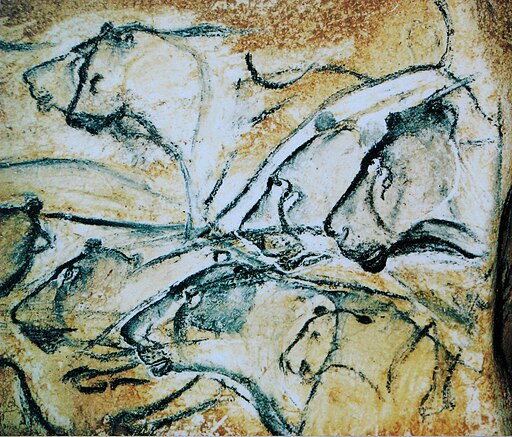My sense of awe and wonder is most often sparked by a newfound understanding of my place in the universe, a feeling Michael Shermer calls “deep and sacred science.” I’ve felt it listening to “The Messiah” in Westminster Abbey next to Handel’s tomb, unearthing the hearth of a 3,200-year-old house, or climbing hundreds of steps through mist-soaked cedars to a neglected Shinto shrine.
For me, the sense is strongest when I feel a connection to my fellow humans, both those with whom I share the planet today and all those who came before. It’s one reason I’m so fascinated by archaeology — the deeper the past, the deeper my awe and wonder.
The Chauvet cave in southeast France was discovered in 1994, and contains the world’s oldest examples of cave art. Artists painted and engraved horses, aurochs, rhinos, mammoths, lions, leopards, and many other Ice Age animals on the cave walls 32,000-30,000 years ago (in the Aurignacian) and again 27,000-26,000 years ago (Gravettian). Just as in Lascaux, the artists used the natural contours of the cave to accentuate their artwork — the jaw muscles of a horse, the humped shoulder of a bison.
You can’t see these shapes in photographs, and unlike Lascaux there is (as yet) no full-scale modern reproduction to satisfy those of us who won’t ever step through that locked door and enter this ancient cathedral.
This is where Werner Herzog‘s new documentary “Cave of Forgotten Dreams” proves invaluable.
Herzog’s film captures the pristine cave art like no photograph or even 2D movie can. Herzog also includes touching moments of modern humanity, like the experimental archaeologist who plays “The Star Spangled Banner” on a reproduction Ice Age flute, his colleague who dreamed of lions after spending five days in the cave, and the master perfumer who crawls through the brush sniffing for the scent of undiscovered caves.
My only criticism is reserved for the last two minutes of the film, during which Herzog narrates a well-meaning “postscript” that attempts to connect modernity with antiquity via an analogy featuring albino alligators warmed by nuclear power plant effluvium. (No, I didn’t get it either.) After the final cave sequence, it would have been a postscript best left unread.
But when the filmmaker lets light, dark, the cave, and the artists themselves work their ancient magic, the experience is positively numinous.

Thanks for posting. Well written. Uncle Jacques
LikeLike